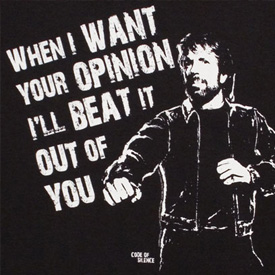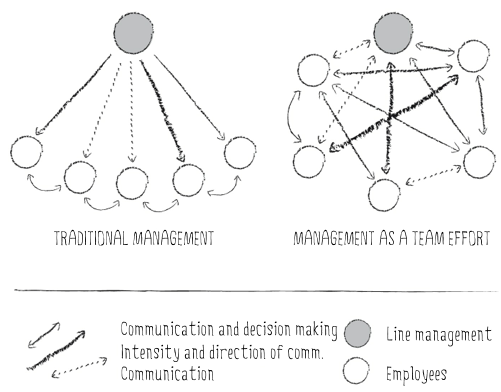Leadership at all levels
Which forms of management are necessary to nurture a culture of continuous improvement? Modern (change) management is mainly about
- A careful awareness of what is actually happening in an organization,
- Professional communication, both internally and externally, i.e. with all stakeholders above and beyond corporate barriers, hierarchical structures or departments,
- Agile design of the change process using state of the art methods.
Curious self-perception
This is also about self-perception, particularly among management. The Viennese organizational consultant, Rudi Wimmer, defines success of any single change process by the willingness of management to examine first its own perception of itself. (see: Organisation und Beratung: Systemtheoretische Perspektiven für die Praxis, Wimmer 2004). Only the insight by management that it cannot function as a change agent without questioning at the same time necessary changes in management performance, creates the foundations for successful change. My experience shows that this is anything but taken for granted. It is likewise confirmed by a survey of 1,100 British first line managers: 72% of those surveyed never doubt their own management skills and this exaggerated opinion of oneself does not stop there: 80% of management believe they are among the top 20% of managers. (Kunst des Entscheidens: Ein Quantum Trost für Zweifler und Zauderer, Ortmann 2011)
So what lies behind all these curious self perceptions? You would do well to assume that it is the remnants of a mechanistic organizational image based on a management model which decides to ignore critical self reflection and a fitting modesty. The company as a machine corresponds to the manager as a mechanic or administrator.
Management as a team effort
In the 21st century, according to the essence of contemporary management and leadership debates, command and control is bowing to a culture which respects self-control without losing sight of the overall need for organizational coordination. New forms of networked management are appearing at the side of hierarchical management to make best use of the available expertise, particularly with regard to an accurate perception of the environmental dynamics. ‘Management as a team effort’ is fast becoming the key factor.
As this image shows, the concept of management as a team effort points to at least two necessary changes: first, the centralist approach of traditional management must be overcome and second, the “one way street” in the communication and decision making processes.
(Change) Leadership must be nurtured at all levels of the organisation – starting with the workers on the shop floor up to senior management. The 4th Kanban principle.

